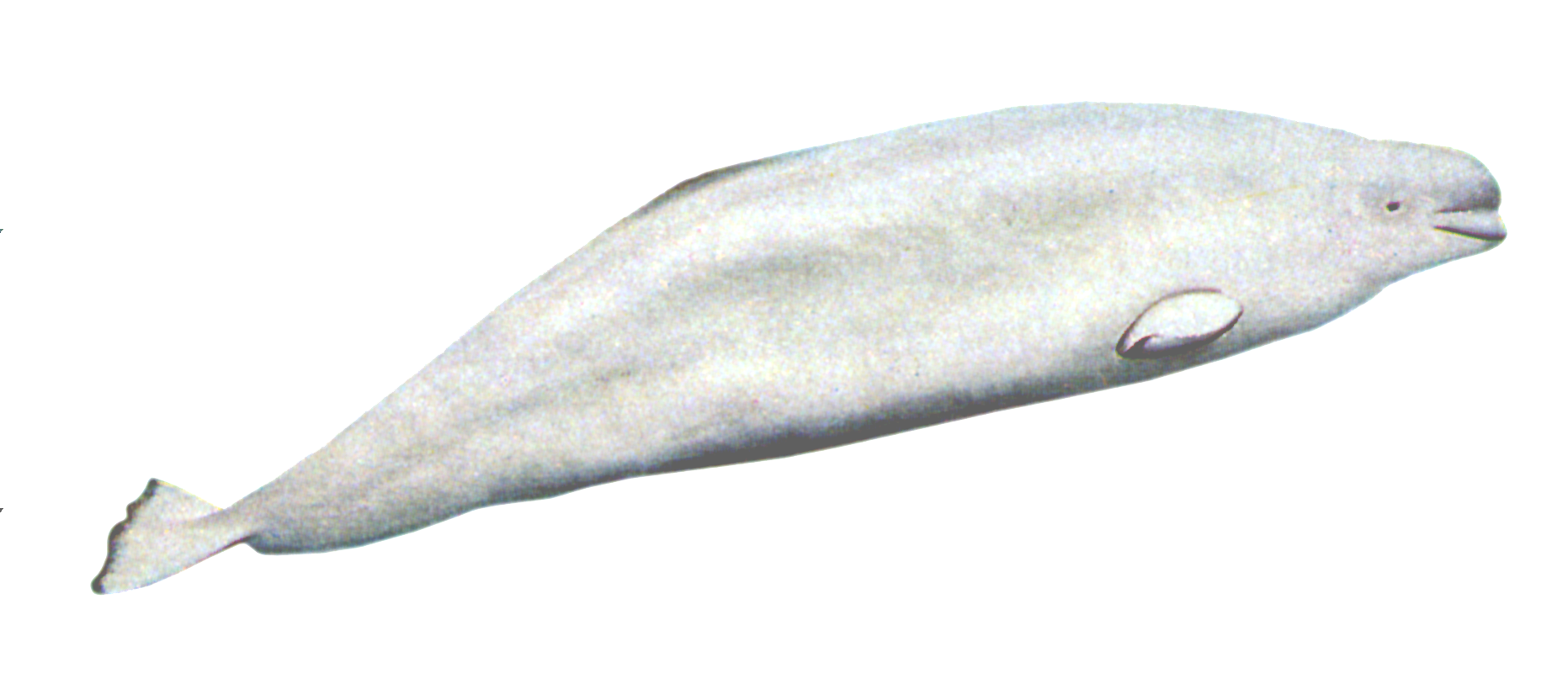Family: Monodontidae
Genus: Delphinapterus
Species: D. leucas (Pallas, 1776)
Belugas, like all other whales, are warm-blooded animals with a body temperature very close to that of humans, and yet belugas have survived and adapted quite successfully in their icy, Arctic habitat. This is made possible in part by their thick layer of fat, or blubber, which acts as a thermal regulator, preventing body heat from escaping. The beluga, like the right whale and bowhead whale, has no dorsal fin, but rather a low dorsal ridge. A dorsal fin would seem to be a hindrance in a region where freeze-over is a common occurrence.
The many high-pitched squeals and chirps emitted by the beluga can be heard through the hulls of boats, and are the basis of their secondary name “sea canary”. They are among the most vocal of all cetaceans.
Physical Description: They are extremely stocky, fat animals with a disproportionately small head. The blowhole is set slightly to the left of the prominent forehead. They have a slight but discernible beak.
Color: Snow white overall. The young are brown with gray dorsal spots, turning gray and then white as they mature.
Fins and Flukes: A narrow ridge notched laterally to form a series of small bumps runs down the back in place of a dorsal fin. The short, wide flippers are often rounded at the tips. The broad flukes are very well developed, pointed, and swept back at their tips, with a definite median notch.
Length and Weight: They reach about 16 ft (5 m) and 2,400 lb (1,000 kg). Males grow slightly larger than females.
Teeth: 8 to 11 conical teeth are found in each side of the upper jaw; 8 to 9 in each side of the lower jaw.
Feeding: They feed on a wide spectrum of shallow-water organisms, such as decapod crustaceans, cephalopods, and schooling fish.
Breathing and Diving: They exhibit a variety of behaviors, including slow and rapid motion while swimming, and more dolphin-like breathing when they rise to the surface, blow, drop out of sight for up to a minute, and rise to blow again.
Mating and Breeding: Breeding season is June to August. Calves 5 ft (1.5 m) are born after a 14-month gestation period, followed by a 20-month lactation. Males reach sexual maturity at 9 years, females at about 5 years.
Herding: Normally less than a dozen, often in single file. During the southern migration, small herds join to form large ones often numbering several hundred animals.
Distribution: Arctic Ocean and adjacent seas. These whales frequent shallow waters and estuarine regions.
Migration: There is a southern migration in autumn from the Arctic to Maritime Provinces for birthing and mating. They are regularly observed in the St. Lawrence and Saguenay rivers in late spring and summer. Sightings have occurred as far as 700 m (1,100 km) up the Yukon River and the St. Lawrence River to Quebec.
Natural History Notes: Belugas are thought to live 35 to 50 years.









